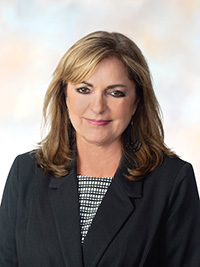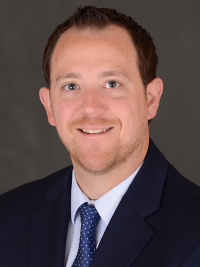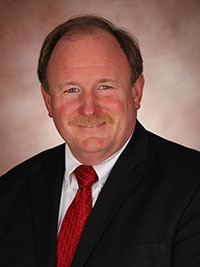Best practices for relieving unprecedented cost pressures facing healthcare providers
Fresh off the unparalleled demands of the COVID-19 pandemic, hospitals and health systems across the country are feeling new financial pain. The reasons are many: labor cost increases, inflation, declining Medicare reimbursements and clawbacks. The list goes on.
In this HFMA Executive Roundtable held on Oct. 16, participants discussed how healthcare providers could optimize flow to seek relief from unprecedented cost pressures during the pandemic and beyond.
Several participants in the roundtable confirmed that healthcare organizations are experiencing negative financial margins this year. For some other health systems, cash reserves are dwindling rapidly.
Roundtable moderator Bill Voegeli noted that where a hospital may have had three- or four-months’ cash reserves on hand in the past, the number now may be down to a few days cash on hand at best.
One of the top drivers of financial stress right now is the tight labor market, which is forcing health systems to learn how to do more with less. Advanced technology tools may be the answer for many, Voegeli said. In addition to helping health systems become more efficient, advanced technology tools such as enterprise resource planning (ERP) systems can aid with employee engagement and retention, several roundtable speakers noted.
Roundtable participants also advised that healthcare finance executives look toward touchless transactions — where an invoice or a payment can get into your ERP system without a person touching it. Many hospitals and health systems already have the right tools and the right strategies in place to be able to make that a reality.
The healthcare industry has gone through a lot over the past two years, and we’ve seen a lot of changes. How has the available days cash on hand changed at your organization?
Melissa Kern Balliet: For us, it is right around 189 days. It used to be much higher than that — as high as 257 in 2020 and 255 in 2021. And when we met with our CFO a month ago, he said it’s going to get worse before it gets better.
Kim Hebert: I think we all are suffering, especially with a downturn in the market. It has been a difficult year, and we don’t have any additional reimbursements coming in from the government. We’ve seen about a 30% increase in our labor cost year-over-year, and about a 10% increase in supply costs.
David Schweer: At my organization, although we have some cash, we have a lot of COVID-19 funds and other things that are earmarked. So you can’t really count that in your operating funds. If you take away those funds, we’re more challenged. We’re really at an inflection point.
Darcy Robertson: We haven’t seen a significant decline. We are probably at about 55 days unrestricted, and over 100 days total.
Cheryl Nottingham: We’re a small 60-bed independent hospital. Days cash on hand at the end of last year was 120. I’m estimating that we’re going to end at about 90 days COH this year. We were paying back our accelerated advance funding, which we did back in September. We are also investing in our associates by making a large market adjustment to wages of over $3 million to get back within market. This is a big investment for a small hospital.
What initiatives do you have in place to deal with inflationary pressures?
Hebert: We put a lot of our three- and five-year plans on hold. Right now, we’re in break/fix mode. Of course, we still have strategic capital projects that were already in the works that we continue to work on. But we’ve decreased our overall capital budget for this year until the markets get better and operating margins improve.
Robertson: Volumes haven’t really changed much. Our areas of opportunity are really going to be in referrals. We’ve got some financial improvement plans in place. We also get quite a bit of supplemental income. We’re actually not doing too bad, We’re generally not far from budget, although we typically see about a $350,000 increase in salaries every year, and this year it was $1.1 million. So that’s going to be tough over the next couple of years.
Hebert: We actually have a program in place where things are paid via a card that generates rebates every day. It’s distributed across all of our hospitals and the entire health system. We did start to get on the rebate program after our merger in October of 2020. Some of your big vendors just don’t want to participate in the program, but a lot a lot of them do.
Has your organization done anything to optimize your days payable outstanding (DPO), and do your vendors offer early payment discounts?
Chris Schenkel: We recently installed a new ERP system. And we’re cleaning up a lot of bad behavior. In the process, we’re paying our vendors a lot later because of all the change management related to getting a new flow back in place. But [optimizing outstanding DPO] is number one on my opportunity list. It has been successful for us with private organizations, and it’s very easy to set up.
According to CMS data, $24 billion out of the $107 billion in COVID-19 advanced Medicare payments still remain unpaid and are now being pulled back with interest. Meanwhile, labor and pharmaceutical costs are going up. What are the solutions to getting these under control?
John Thibeau: We’re creating a contracted cost analysis where we can utilize it, such as with maintenance. We’re eliminating contract agreement in-house. We can manage it more effectively now and have a little more flexibility within some of the projects that we’re doing.
One of the things we’re experiencing is that it takes longer to clean. So some of the general maintenance has been lost because we’re having to spend more time cleaning rooms, or we’re experiencing a decrease in staff in those areas. So frankly, that is an easy place for management to say, “No.” So we’re being asked to do more and more with less.
Schenkel: So I’ll kind of flip that around. I had an open position for a finance business partner. The position was open for more than six months. I couldn’t find anybody. And I was shocked. We had maybe a resume or two trickle in every month or two. I was finally able to fill it a month or so ago, after nine months. We are definitely struggling with senior positions and competing with other industries.
Has your organization made a strategic effort to improve financial efficiencies, such as by reducing the financial waste that occurs through manual processes, old systems or multiple people doing the same task?
Schenkel: Because of the change management involved in streamlining some of these things, it’s really been a struggle for our organization. I mentioned before that we put in a new ERP system in the past year or so. We’re still stabilizing and optimizing that solution, and we’re still doing pilots on our legacy systems.
How much does your corporate culture influence your ability to make changes to your financial processes, procedures and policies?
Schweer: It can be a barrier, and particularly in smaller organizations, I’ve encountered it firsthand.
Robertson: We are transparent about finances. We have a great leadership team that is on board with financial changes that are necessary and impactful to the staff and the organization. Our culture is dependent on embracing change, and we do a great job.
Schweer: Besides everything we’ve talked about, one other thing to add to the list is operational improvement — that kind of transformation, with really good return on investment. There are going to be fewer people working on finances, and we’ve got to work smarter. We keep saying that, but what are the examples of people really doing it? Not just better at soft things, but really hard savings. How can we get people to work smarter? This is the real challenge.
Conclusion
According to the American Hospital Association, the healthcare industry had a job vacancy rate as high as 31% at the height of the pandemic. Many of those vacancies were due to professionals that decided to leave the field entirely. Those job vacancies won’t be filled overnight. In the meantime, hospitals and health systems must learn to do more with less and take advantage of advanced technology tools to fill much of the void.
Many healthcare executives learned during the pandemic the benefits of being agile and resourceful, Voegeli noted. They discovered along the way the important role that technology investments can play in improving operations, patient care and the bottom line.
Panelists

KIM HEBERT
Vice president of regional finance and CFO at Ochsner Lafayette General Medical Center in Lafayette, Louisiana

CHERYL NOTTINGHAM
Vice president of finance at Atlantic General Hospital in Berlin, Maryland

DARCY ROBERTSON
CFO at North Big Horn Hospital in Lovell, Wyoming

CHRIS SCHENKEL
Director of finance at Penn State Health Saint Joseph in Reading, Pennsylvania

DAVID SCHWEER
Chief operations officer for Toiyabe Indian Health Project in Bishop, California

JOHN THIBEAU
Senior financial analyst at Montage Health-CHOMP in Monterey, California
MELISSA KERN BALLIET
Manager of professional operations at Geisinger in Danville, Pennsylvania
About Remitra
Leading healthcare providers understand that advanced technologies can now help them leap ahead — with increased efficiencies, reduced operating costs, improved revenues and a more engaged workforce. Through the digitization and automation of the procure-to-pay (P2P) process, Remitra® is leading the way. Premier, Inc. (NASDAQ: PINC) is a leading tech-enabled, data-driven healthcare improvement company, uniting an alliance of more than 4,400 U.S. hospitals and health systems and approximately 225,000 other providers and organizations to transform healthcare. Premier is also the force behind Remitra®, one of the most comprehensive, cloud-based procure-to-pay (P2P) technology platforms that seamlessly automates healthcare financial processes to reduce waste and save time for both healthcare providers and suppliers. With integrated data and analytics, collaboratives, supply chain solutions, and consulting and other services, Premier enables better care and outcomes at a lower cost. Premier plays a critical role in the rapidly evolving healthcare industry, collaborating with members to co-develop long-term innovations that reinvent and improve the way care is delivered to patients nationwide. Headquartered in Charlotte, N.C., Premier is passionate about transforming American healthcare. Please visit Premier’s news and investor sites on www.premierinc.com; as well as Twitter, Facebook, LinkedIn, YouTube, Instagram and Premier’s blog for more information about the company.
This published piece is provided solely for informational purposes. HFMA does not endorse the published material or warrant or guarantee its accuracy. The statements and opinions by participants are those of the participants and not those of HFMA. References to commercial manufacturers, vendors, products, or services that may appear do not constitute endorsements by HFMA.






